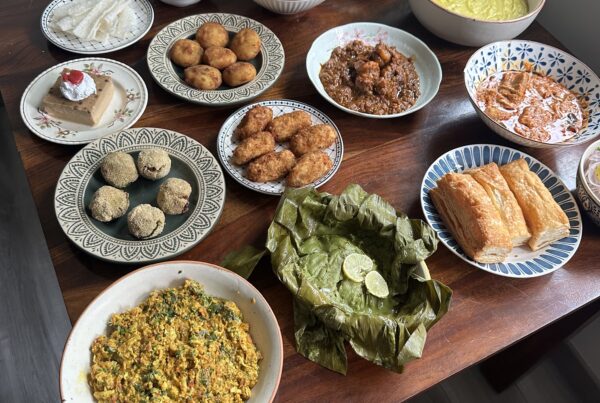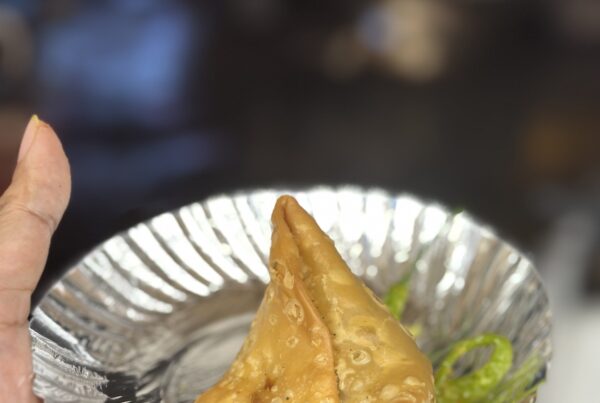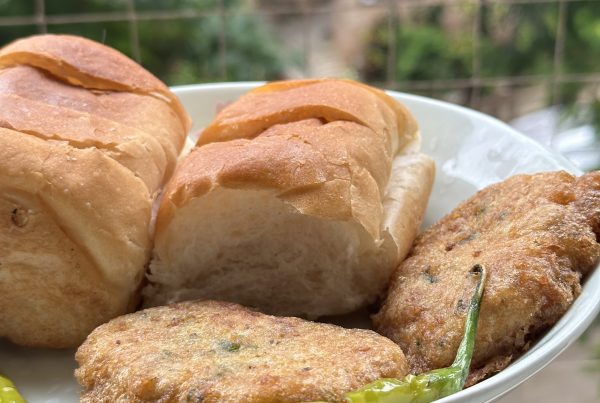“This is what we call boi,” squealed Kainaz when she came across her first ever Bengali parshe curry. This must have been on one of our early trips home (to Kolkata) after marriage. Cooked by my mom or my grandmother. I am not sure. It was a while back.
Parshe is a form of freshwater mullet which you find in brackish waters as my friend Dr Kurush F Dalal tells me. It belongs to the pantheon of what we call ‘chhoto maachh’ in Bengali. Small, often bony fish, eaten whole unlike ‘kaata maach’ which refers to larger fish such as rohu or betki or chital, which are cut into slices and consumed. The former are everyday fish while kaata mach is usually meant for special occasions.
Being someone who was not very fond of fish, I avoided small fish while growing up. My mother loves these. Turned out that so does my wife. A Parsi who had her first encounter with Bengalis and with everything Bengali, including food, only after she met me. Yet she took to parshe like fish takes to water.
 |
| The 5 fish in the bottom right are parshe/ boi/ mullet |
I was tickled by the fact that the Bengali favourite fish that Parsis love too, is called Parshe. It is called boi by the Parsis. Incidentally, ‘boi’ means ‘book’ in Bengali. Something as prized as fish by my people.
There is a slight difference in our love for this mullet though.
I think that the smaller parshe is preferred in Bengal and the preparations of it are rather demure and we treat the fish rather delicately in the kitchen.
If I go by the size of the boi that my in laws would sometimes buy and give us, or of the ones whose pictures I’ve seen from the Globe Hotel at Uduwada kitchen, the Parsis seem to prefer larger sized mullets and their preparations therefore seem to use stronger spices than in Bengal.
 |
| Parshe maacher jhol |
There was parshe among the fish I had bought from Poonam for K’s birthday. There were three small, ‘Bengali sized,’ parshe in what I bought and two large ‘Parsi sized’ boi. I made a simple Bengali kalo jeere (nigella seed based) maacher jhol with the three smaller ones on K’s birthday eve and she loved it. As did I and to me that speaks of how excellent the quality of the fish was as I am rather fussy about it.
We had the two larger ones today. I got the K to do a bit of research and she found a tareli maachhi (fried fish) boi recipe on Bawi Bride’s blog and we used an approximations of the spices given there for marinating the fish: turmeric powder, red chilli powder, salt, lime juice and garam masala (my suggestion as the recipe said ‘tandoori masala). Banu fried it in mustard oil and the fish tasted absolutely fab. The fish had roe, machhed deem. The only part of parshe that I liked as a kid.
I really enjoyed the boi/ parshe today as well. Perhaps I am a changed man. Perhaps that’s what close to 19 years of marriage does to you.
Or is it the lockdown?
 |
| While talking of the lockdown…this is not cool people. Rather irresponsible in fact! |
The menu that I chose for lunch today is a classic Parsi one: Tareli maachhi, dhan dar, patio.
Fried fish, a light yellow dal (Banu’s tud dal with garlic), rice and some Parsi sweet & sour dried Bombay duck pickle (by Zinobia Schroff).
The only thing is that I had red rice for lunch. Something which I doubt any red blooded Bawa (Parsi man) would have. Or Bengali for that matter.
Yes, we like to live on the edge in the Finely Chopped world! I opt for it in the hope that it has higher fibre and lower GI. I like the taste and less of it fills me compared to white rice.
Appendix:
Recipe of the parshe maccher jhol that I made with the first lot.
Poonam’s number for fish deliveries in Bandra, Khar: 9867402956
Zinobia Scroff’s: contacts:
Bengali provisions in Bandra
 |
| I used the word ‘cousin’ light heartedly. Both are short grained, fragrant rices. |
 |
| Food find of the day: Subko, Bandra |
Latest from the #HouseOfCats (while writing this post)
 |
| Little Nimki loves to snuggle between us |







